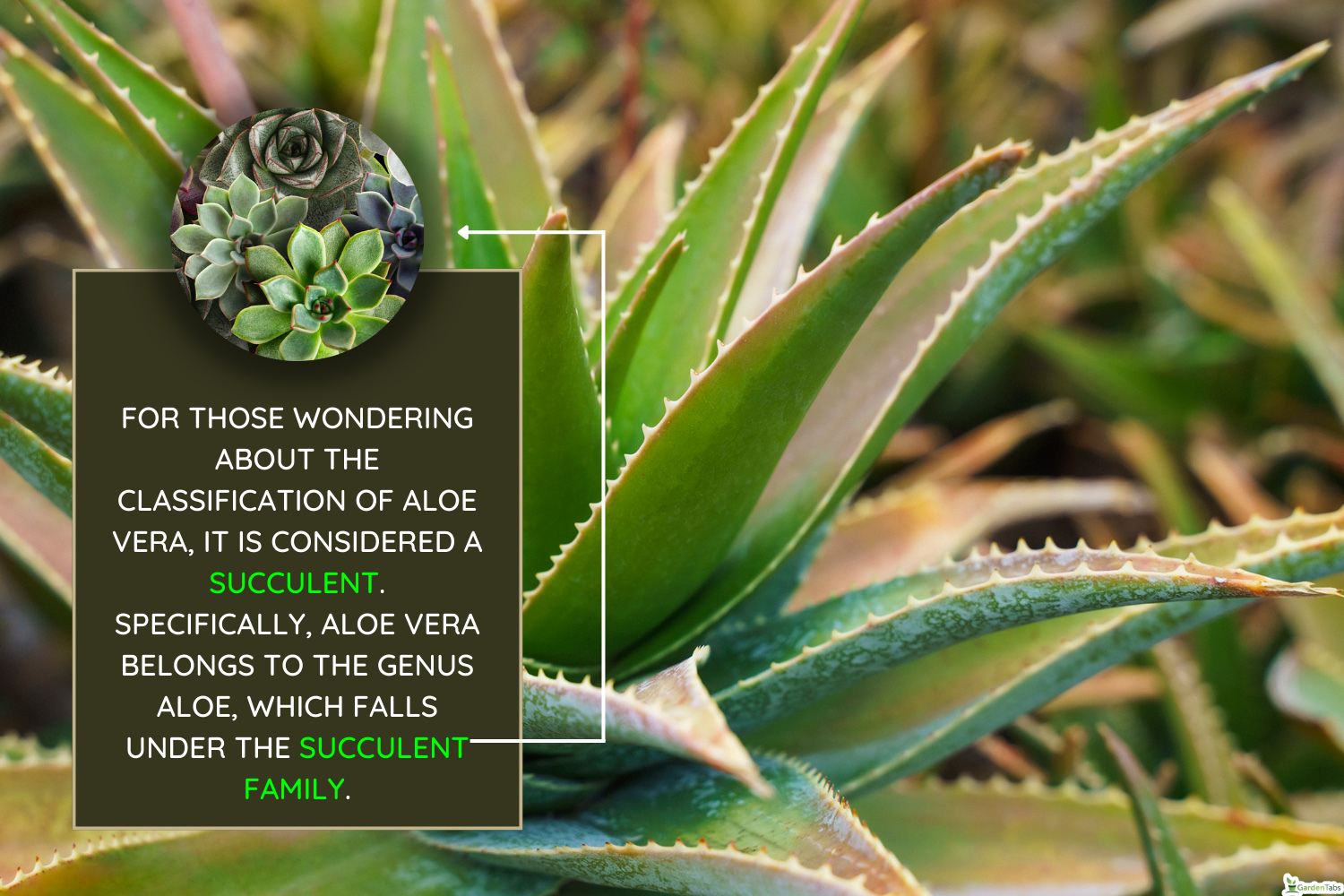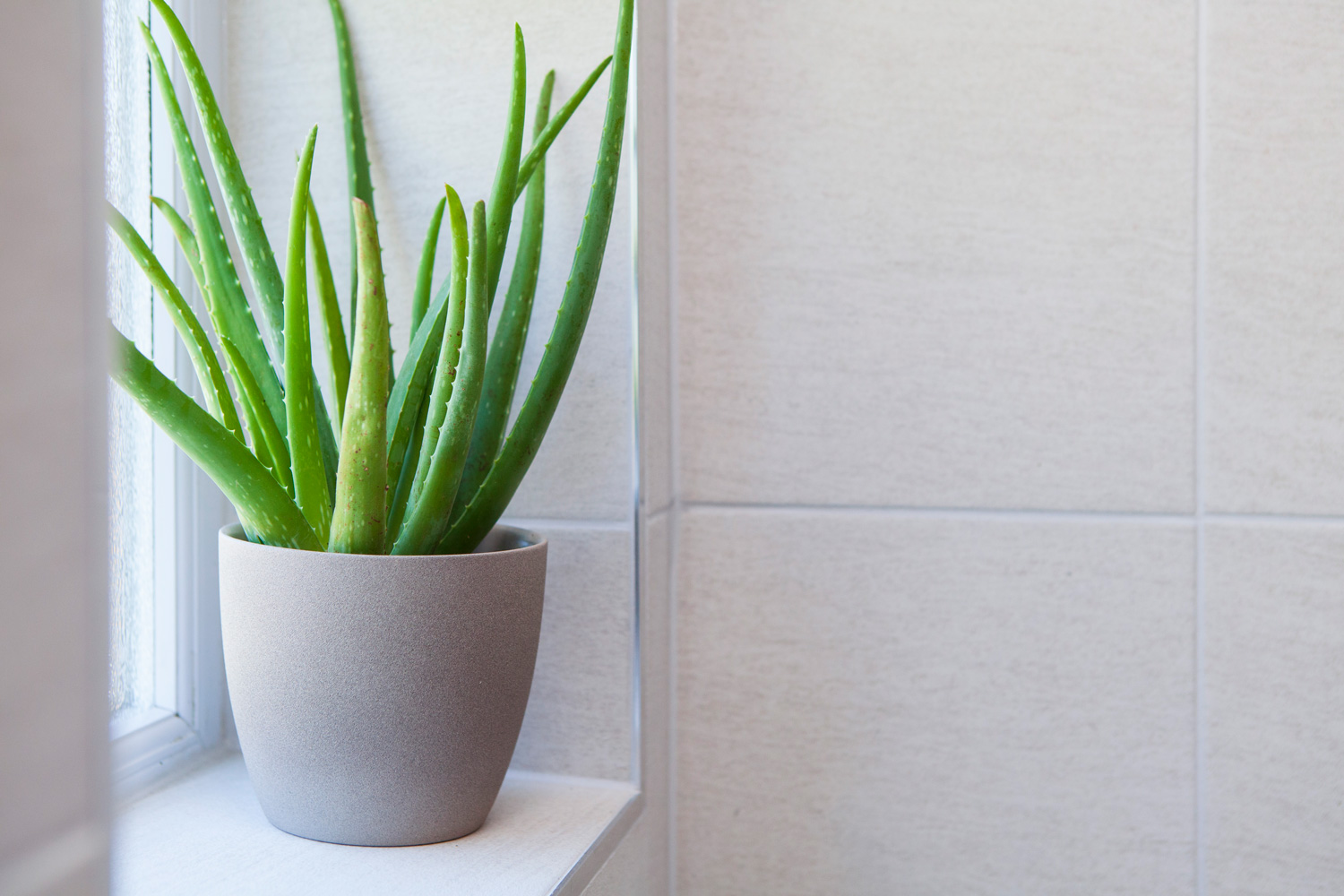Determining what type of plant is growing in your landscape can sometimes be tricky. Do you have an aloe vera in your garden but do not know whether it's a cactus or a succulent? Is there a difference between a cactus and a succulent, or are they the same?
We have done extensive research into these questions and have the answers below!
For those wondering about the classification of aloe vera, it is considered a succulent. Specifically, aloe vera belongs to the genus aloe, which falls under the succulent family.
This plant will be stemless (or short-stemmed), often having thick, greenish, fleshy leaves from one central area. The borders of each leaf will be bordered with small teeth, hence why some confuse this species with a cactus.
As we start this article, we will cover all things aloe vera and discuss how to classify one. Whether you're new to desert plants, have an aloe vera inside out outdoors, or have additional questions: we're here to assist. With that said, let's dive right into this topic!

Is Aloe Vera A Cactus Or A Succulent?
An aloe vera is considered a succulent. As we said, this plant belongs to the genus aloe, which falls into a succulent classification.
This evergreen perennial is a favorite among succulent growers, as it is easy to manage and multiplies very quickly. However, although aloe vera grows in the desert, it isn't a cactus.
People make this common mistake when referring to the species, as aloe vera can have prickly edges along its leaves. Again, these aren't necessarily sharp enough to prick your finger, but they can give the illusion an aloe has cactus-like features.

It's also worth mentioning that aloe vera is one of the more invasive succulent species. You can find it growing throughout many regions: tropical, semi-tropical, and arid climates.
Aloe vera also tends to grow near cactus varieties, so they share a few geographical similarities.
What's The Difference Between A Cactus And A Succulent?
When it comes to the main difference between cacti and succulents is their appearance and overall structure.
A cactus is almost always identified from its needle-like spines. Succulents, however, do not feature needle-like spines and won't be as sharp to the touch.
On top of that physical difference, cacti feature fleshy stems that store water and can perform photosynthesis. Succulents, on the other hand, hold water and nutrients in their leaves, not stems.
In addition, a succulent and cactus will similarly perform photosynthesis. According to the National Park Service, cacti utilize CAM photosynthesis, a process unique to succulents.
So, in that way, the two are similar. Again, this isn't enough to confuse aloe vera as much as we often do, but it's certainly a notable similarity.
Furthermore, most cactus species don't have leaves, which sets them apart from aloe vera.
Can A Cactus Be A Succulent?
Yes. It is common for many cacti to fall into a succulent category. According to the UCCE Master Gardeners, many cacti are succulents, while many succulents are not cacti.
Specifically, a cactus is essentially a succulent that can store moisture but is placed in a separate category (Cactaceae). So, this is why the two share many similarities and often become confused.
However, not all cacti qualify for a succulent classification, mainly because of their leaf/stem structure. Regardless, the two will perform photosynthesis similarly, which is a big deal.
One thing to remember with succulents is that they store water in their stems, roots, and leaves for extended periods.
That's because many succulents live throughout desert regions, which often leads to drought. Therefore, a succulent can survive months without rainfall or watering through this storage technique.
That is why some cacti fall into the succulent category while others do not.
What Family Does Aloe Vera Belong To?
Now that you know aloe vera isn't a cactus, you need to know what family it technically falls under.
An aloe vera is in the Asphodelaceae (Liliaceae) family. Typically, they're shrubby or arborescent, perennial, xerophytic, succulent, and pea-green-colored.
An interesting feature of aloe is that almost every variety is mainly green. Aloe also shares similar physical traits with each other, even if that comes down to their leaf shape.
It's easy to bunch every type of aloe plant into the aloe vera category. Unfortunately, this isn't correct, and there are countless varieties, all with their own unique characteristics and traits.
However, aloe vera is a more widely grown/found aloe variety and is a top choice for many.
How Many Aloe Varieties Are There?

As of now, there are currently over 300 varieties of aloe plants growing worldwide. With that said, not all of these varieties share the same unique qualities of aloe vera plants.
Specifically, only three or four species of this plant contain the medicinal qualities of aloe vera. So, you can't use any type of aloe for healing and medicine.
However, most aloe varieties will share physical similarities and should be easy to grow and manage. As we said, aloe typically thrives in drier, desert regions, which not all plants can do.
According to ScienceDirect, the four main aloes include:
- Aloe barbadensis Mill
- Aloe arborescens Mill
- Aloe vera var. chinesis Berg
- Aloe ferox Mill
Of course, these are just four of the 300+ out there, although they are the most studied.
Therefore, you can usually find better information on caring for and growing these specific aloes versus others, but that shouldn't stop you from making a decision.
You can also expect typical aloe vera to be best for skincare and other beauty-related products, so that's worth mentioning for eager gardeners looking for a DIY option.
Regardless, these succulents are beautiful and have many unique qualities.
What Do You Use Aloe Vera For?

One of the main draws to growing aloe vera is what you can use it for. Besides being a healing plant overall, there are specific ways to utilize the leaves of aloe vera:
- You can use it to treat burns
- Aloe vera can help with digestive health
- Promoting oral health
- Aloe vera works to clear acne
- You can use it to relieve anal fissures
So, looking at this list, you can see how many ways aloe vera comes in handy. For example, a popular home remedy for sunburns and rashes is breaking off a leaf from aloe vera and rubbing the insides on the troubled skin.
Additionally, many people use aloe vera for their acne, as it can help soothe and moisturize the outer skin barrier. So, from a skincare perspective, this succulent works wonders.
It's also known for aloe vera to help with your teeth and gum health, so your plant works for your insides. Now, aren't you glad this species isn't considered a cactus?
Can You Grow Succulents And Cacti Together?
Yes! Generally, desert cacti, forest cacti, and succulents can all be together nearby. Considering these different plant types make for gorgeous gardens and home displays, pairing succulents and cacti is a great choice.
One of the many benefits of growing the two together is that they're low maintenance. So, even though your aloe vera isn't a cactus species, you can easily plant it near one without issues.
These two desert species are also drought-friendly and hardy, so you might be able to have them on the same watering schedule.
As we said before, some cacti are considered succulents, so there's a chance your plants will be within the same family/species.
In addition, you can also sometimes find desert bundles that include cacti and aloe vera, so keep an eye out for those planters!
Where Is The Best Place To Plant An Aloe Vera?
Now that you know the basics, you need to find a suitable location for your aloe vera.
First, you want to decide where your succulent will go. Is it inside or outdoors? Growing aloe vera indoors might be your only choice if you live somewhere with cold weather and unstable conditions.
In that case, we recommend placing it somewhere with bright, direct sunlight throughout the daytime. In contrast, if you are in the desert or a succulent-friendly region, you need to be more precise with your planting location.

Typically, aloe vera prefers bright sun in the morning, followed by dappled shade during hotter afternoon hours. So, if you can find a spot with a bit of shading through the afternoon, that will be best.
A common misconception about aloe vera is that it needs full sun to survive. Although this can be true indoors, an outdoor aloe plant doesn't like the sun beating down on it at all times.
You might also want to keep your aloe vera somewhere shaded inside if the sun blares into your window for more than six hours each day. Everyone will be slightly different.
To Wrap Things Up
Whether you have an aloe vera growing in your garden or want to plant one, it's always good to know how to classify one. From what we found, aloe vera are succulents, not cacti.
Even though they are desert plants, aloe vera doesn't have sharp needles and doesn't usually have stems. One major similarity, however, is that succulents and cacti perform photosynthesis similarly.
There are also countless cacti that are considered succulents, so it can be confusing to gardeners.
Regardless, your aloe vera is one of the four medicinally beneficial aloe plants, so don't be afraid to try a DIY remedy for skin issues or stomach pain.
Made it to the end? Check out these other related garden articles below!
Where To Place Aloe Vera Plant In Feng Shui
11 Types Of Echeveria You Should Consider For Your Succulent Garden
